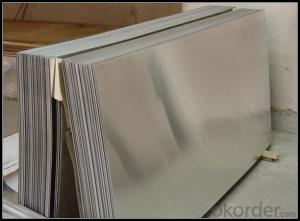Aluminum foil, a common household item, has a fascinating history that dates back to the early 20th century. Reynolds Wrap, the brand that has become synonymous with aluminum foil, has a story that is as rich and complex as the product itself. In this article, we will explore the origins of Reynolds Wrap, its impact on the culinary world, and the cultural significance of this versatile material.
The Birth of Reynolds Wrap
Before we dive into the history of Reynolds Wrap, it’s essential to understand the context in which it was created. The early 1900s were a time of rapid innovation and industrialization. The world was on the brink of significant changes, and new materials were being discovered and developed at an unprecedented pace. It was during this time that aluminum foil made its debut.
Alcoa, the Aluminum Company of America, was the first to produce aluminum foil in 1910. However, it wasn’t until 1947 that Reynolds Metals Company, a competitor of Alcoa, introduced Reynolds Wrap to the market. The company was founded by Richard S. Reynolds, who was known for his innovative approach to manufacturing and marketing. He saw the potential in aluminum foil and decided to create a product that would revolutionize the way people cooked and preserved food.
From Kitchen to Space
Reynolds Wrap quickly gained popularity due to its versatility and convenience. It was initially marketed as a way to wrap foods for cooking, but its uses quickly expanded beyond the kitchen. People began using it for a variety of purposes, from wrapping gifts to insulating homes. The product’s popularity skyrocketed during World War II when it was used for military applications, such as radar shielding and insulation for aviation equipment.
One of the most remarkable uses of Reynolds Wrap was during the Apollo space missions. The aluminum foil was used to insulate the spacecraft and protect it from the extreme temperatures of space. This highlights the incredible adaptability and resilience of the material, which has been a key factor in its enduring popularity.
Culinary Revolution
The impact of Reynolds Wrap on the culinary world cannot be overstated. It has transformed the way we cook and preserve food, making it easier than ever to prepare meals and store leftovers. The use of aluminum foil in cooking techniques such as grilling, baking, and steaming has become ubiquitous. It has also played a significant role in the development of modern cooking methods, such as the popular ‘foil packet’ cooking, where ingredients are sealed in foil and cooked to lock in flavors and moisture.
Moreover, Reynolds Wrap has been a staple in professional kitchens for decades. Chefs rely on it for its non-stick properties, which make it perfect for lining baking sheets and molds. It has also been used in the creation of intricate culinary presentations, adding a touch of elegance to dishes without compromising on taste or quality.
Cultural Significance
Beyond its practical applications, Reynolds Wrap has also become a cultural icon. It has been featured in numerous films, television shows, and even art installations, reflecting its deep integration into everyday life. The product has become a symbol of convenience and innovation, representing the spirit of the times in which it was created.
The annual ‘Reynolds Wrap Super Bowl Commercial’ is a testament to the brand’s cultural impact. These commercials, which often feature humorous or heartwarming stories, have become a beloved tradition for many Americans during the Super Bowl, further cementing Reynolds Wrap’s place in popular culture.
The Future of Reynolds Wrap
As we look to the future, it’s clear that Reynolds Wrap will continue to be an essential part of our lives. With ongoing advancements in technology and materials science, we can expect to see new and innovative uses for aluminum foil. From sustainable packaging solutions to advanced insulation materials, the possibilities are endless.
However, the environmental impact of aluminum foil production and disposal is a concern that cannot be ignored. As a society, we must strive to find ways to reduce waste and promote sustainable practices. This includes exploring alternatives to single-use plastics and encouraging recycling initiatives.
In conclusion, Reynolds Wrap’s history is a testament to human ingenuity and our ability to adapt and innovate. It has not only transformed the way we cook and preserve food but has also left an indelible mark on our culture. As we celebrate the past and look forward to the future, let us appreciate the simple yet powerful aluminum foil and its many contributions to our lives.

